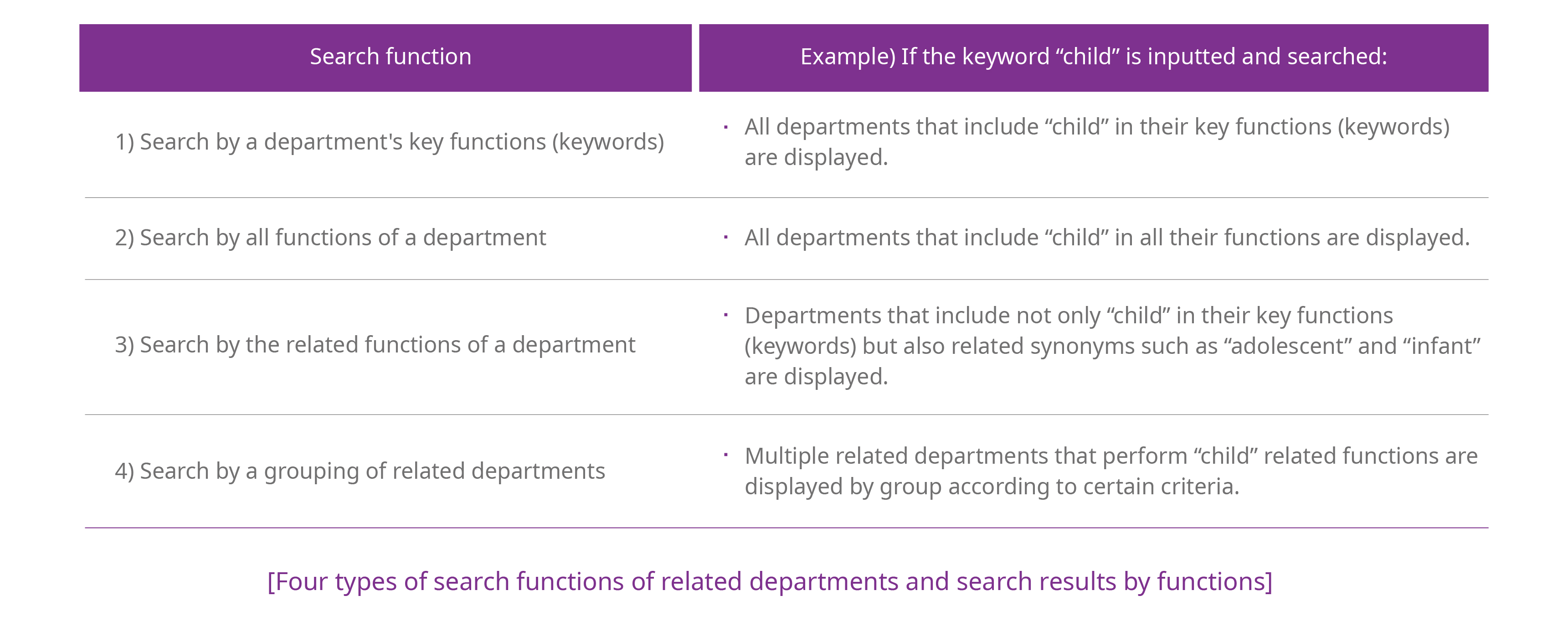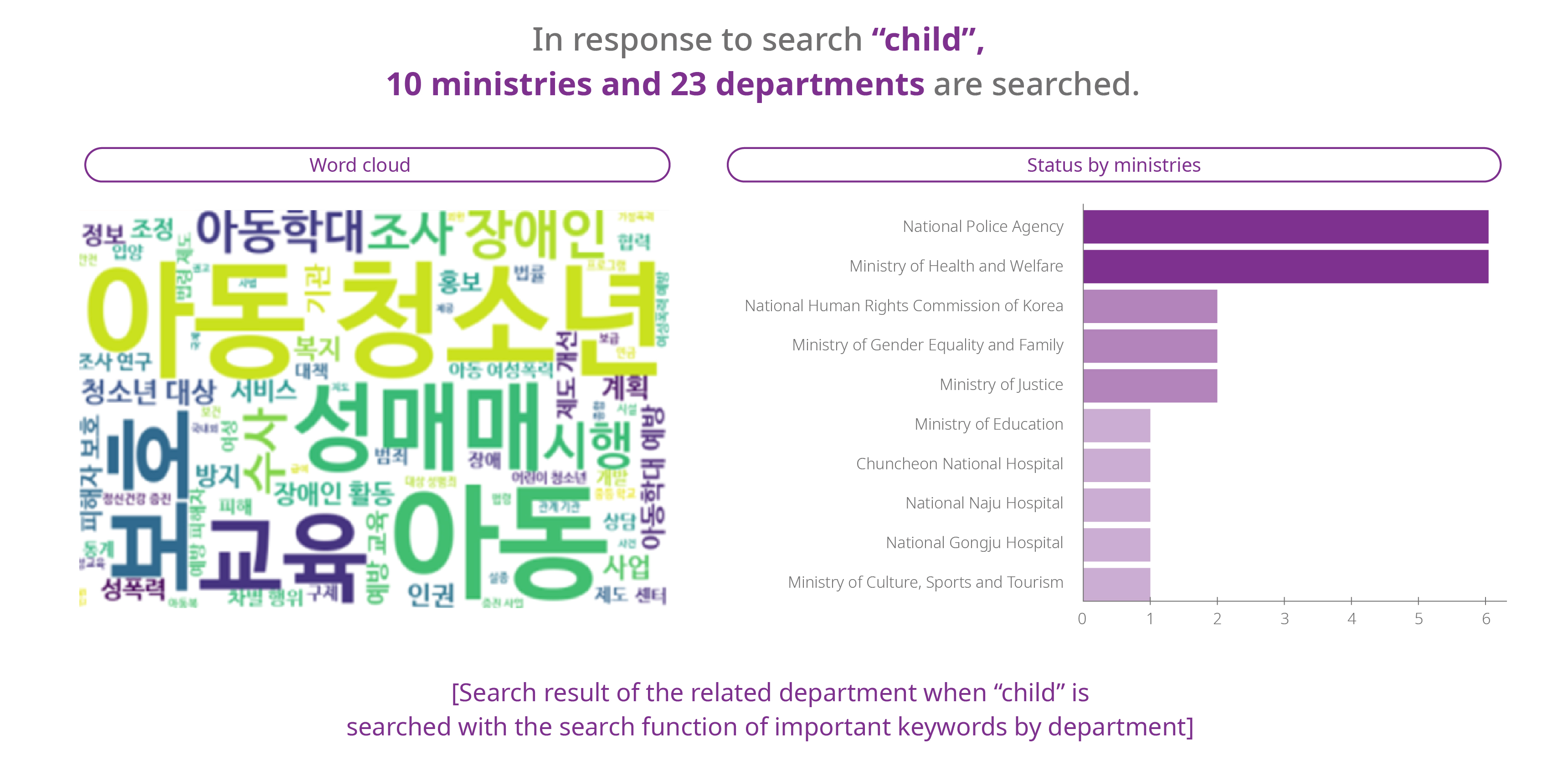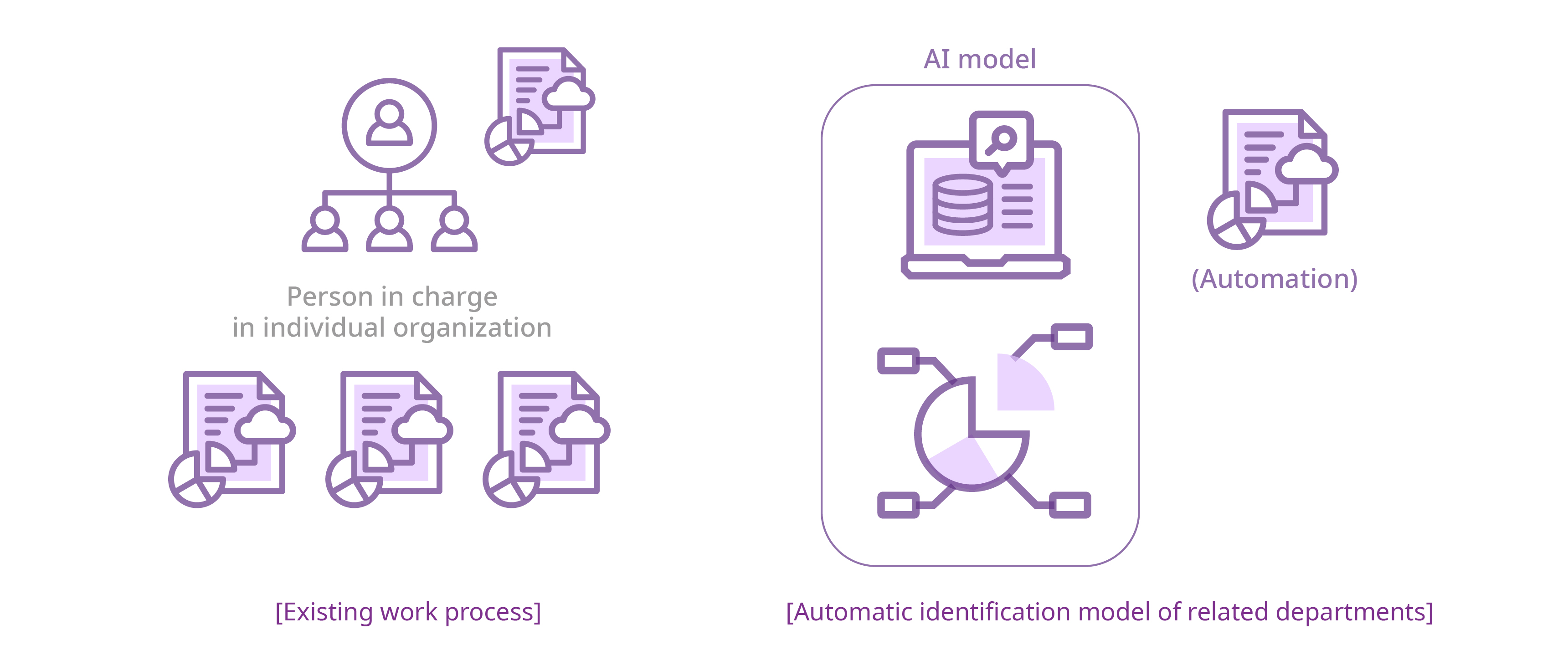Content
DECEMBER2021
1. Background to promotion
It is necessary to provide effective public services to meet public demand based on data, as prescribed under the Data-Based Administration Activation Act. Government departments can improve their work methods, boost administrative efficiency, and provide high-quality services to the general public through data-based administration.
In order to improve their work methods and thus meet public expectations, a model for automatic identification of the relevant departments has been developed. This model was motivated by an idea about how to improve government works by combining a data analysis model with organization review-related tasks in the Organization Planning Division under the Ministry of the Interior and Safety. In the existing work process model, individual employees work based on their knowledge, experience, and search ability, whereas the automatic identification model combines text analysis with the existing work process model.
2. Promotion procedure
The goals of data analysis were determined and the range of the promotional work finalized in February 2021. Accordingly, the analysis goals were concretized with a list, such as “identification of the related departments throughout all ministries via keyword search” and “automatic search of organization review files”, and the development of the automatic identification model of the relevant departments in all government ministries was initiated by each department. Then, a functional upgrade and wider use of the model throughout all ministries were confirmed as the general direction of project promotion.
After completing the initial development of the pilot model (March to April 2021), the model was upgraded by taking into account on-site opinions, data addition of basic rules of operation for the institutions in charge of its operation, and improving the search function (May 2021). From June 2021, the developed model was transferred to the development server of the government organization management system, and its pilot operation was commenced after completing the environmental configuration process.
3. Contents
The automatic identification model of the related departments extracted the representative keywords of the key functions by departments in the organization enforcement regulations using a data mining technique, developed four types of identification and search functions for the related departments among the ministries, and implemented search screens considering user convenience. The four types of searches functions are as follows:

When a person responsible for handling a given organizational task encounters an issue, such as child abuse, through the automatic identification model of the related departments, he or she can respond to the issue rapidly and accurately by improving the existing method, which finds the related departments manually by a person in charge of an organizational task individually throughout all ministries.

4. Expected effects
The automatic identification model has many positive effects, including efficient and accurate organizational work supports (response to urgent issues and configuration of the collaboration system). Previously, the individual persons in charge of each organizational task surveyed and collected data manually to respond to the organizational configuration of pending issues throughout all ministries. It generally took one to two days to configure a response system using the survey and collection method based on manual work, although a quicker response was required for emergency issues. Now, the ability to respond to pending issues has been improved by real-time identification of the related departments using an analysis model that employed the proactive use of public data and text analysis technology, and a rapid and accurate response system can be realized when summoning an emergency meeting.

In the future, it will be possible to conduct a real-time search of the appropriate persons in charge of specific works by extending the users of the model to include general civil servants instead of just persons in charge of organizational work. Previously, one depended on organizational charts, press releases, or background knowledge when requesting work cooperation, such as a data review, from other ministries, which made it difficult to find the relevant departments or persons in charge of a task, as well as being time-consuming and wasting administrative resources, as the details of specific tasks were delivered to too many unnecessary departments even after issuance of the task request. However, if the proposed automatic identification model is widely adopted in the future, it will be possible to automatically find the departments and tasks related to a specific task throughout all ministries, thereby achieving a rapid and accurate search for the departments concerned.
Finally, the model can be spread by linking it with other platforms. Public satisfaction with services can be improved via linkage with civil proposal and complaint platforms that are directly related to civil services. The assignment of a person to manage the civil complaint platforms, such as national petitions and e-People, could be improved and automated using the data analysis model, thereby shortening the time taken to respond and improving the accuracy of response. By linking the search model of the related departments throughout all ministries within the Collaboration Matching Platform at Gwanghwamoon 1st Street, a collaboration system can be fully supported to solve pending policy issues, such as suggesting candidate departments preemptively to those who propose collaboration.
5. Future plans
Currently, upgrading or improving the model’s functions, such as the keyword extraction function, enhancing user convenience by securing additional data, and applying the model to the government organization management system are being promoted for the second half of 2021. In the mid-to-long term, it will be necessary to review such matters as how to improve access to the model by general civil servants, and how to promote widespread use of the model and link it with other proposals and civil complaint reception channels, in order to improve public services and promote collaboration with other related ministries.
- Magazines






